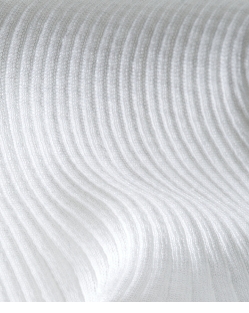 |
 |
 |
||
COTTON
COTTON
Cotton is widely regarded as the most versatile and practical of all the natural fibres. Its value as a commodity lies in its range of universally appreciated properties that are relevant to all markets, from the most value driven price categories through to premium designer brands. It embodies a well recognised democratic appeal, which is demonstrated in the globally relevant contemporary ‘uniform’ of cotton T-shirts, sweats and jeans. Cotton has the capacity to express a broad spectrum of fashion personalities depending upon the processing and weave or knit structure.
The structure of a cotton fibre is unique; it is the arrangement of the cellulose polymers that lend the fibre its strength, absorbency and longevity. Each individual fibre is made up of between 20 to 30 layers of cellulose, coiled in a neat series of natural springs. The fibres of the open boll dry into flat, twisted ribbon-like shapes that become interlocked together. It is this interlocked form that is ideal for spinning into yarn. The inherent functional and tactile qualities of cotton fibre make it a truly trans-seasonal product. It is valued for its durability, comfort next to the skin and superior absorbency. |
COTTON
 PROPERTIES
PROPERTIES It can transcend seasonal dictates, and be cool or cosy, or even appear delicate, superfine and gossamer light. Conversely it is also well suited to tough, practical and hardwearing fashion products.
It can transcend seasonal dictates, and be cool or cosy, or even appear delicate, superfine and gossamer light. Conversely it is also well suited to tough, practical and hardwearing fashion products.